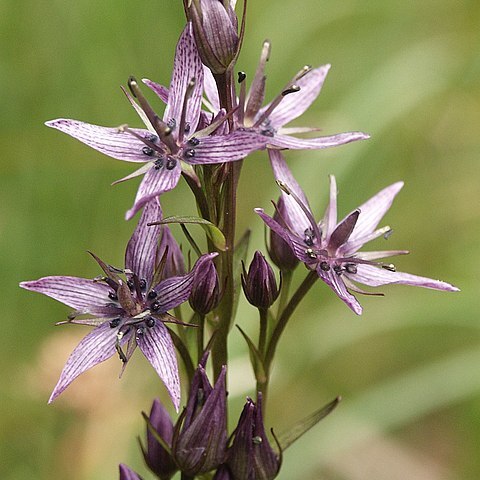Herbs annual or perennial. Roots fibrous or woody; primary roots with few secondary rootlets or rhizomes short and with few fleshy adventitious rootlets. Stems absent, scapiform, or well developed, ascending or erect, terete, striate or angled, simple or branched. Leaves opposite, rarely alternate or whorled, margin entire. Inflorescences cymose, usually grouped into simple or paniculate thyrses, rarely strictly dichotomous, sometimes reduced to single flowers and inflorescences racemelike or flowers solitary and terminal. Flowers 4-or 5-merous. Calyx and corolla rotate, lobed to base, tubes less than 3 mm. Nectaries 1 or 2 per corolla lobe, with fimbriate margin or represented by naked spotlike gland patches. Stamens inserted at base of corolla tube. Ovary 1-celled. Style short to elongate. Capsules 2-valved, few to many seeded. Seeds small.
Cauline leaves opposite in distant pairs, sessile or very shortly petiolate; basal leaves (sometimes soon deciduous) narrowed into a petiole.
Corolla 4–5 lobed, white, blue or yellow, with a very short tube; lobes erect, with 1-2 basal glandular nectaries within.
Stamens 4–5, inserted in the sinuses of the corolla, shorter than the lobes; anthers small.
Ovary ellipsoid, unilocular; ovules numerous; styles short or obsolete; stigma bilobed.
Calyx 4–5 lobed with a very short tube, lobes linear, lanceolate, ovate to obovate.
Capsule oblong or lanceolate in outline, splitting septicidally, bivalved.
Flowers 4–5 merous in lax, few-many flowered cymes, rarely solitary.
Stems erect, ascending or straggling; simple or branched, 4-ridged.
Seeds numerous subglobose, compressed, faveolate or frilled.
Annual or perennial herbs.

